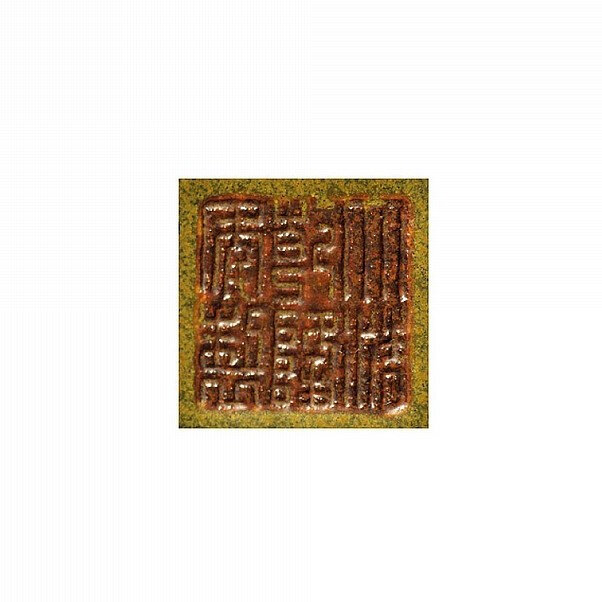A fine tea-dust-glazed bottle vase, seal mark and period of Qianlong (1736-1795)
Lot 3032. A fine tea-dust glazed bottle vase, seal mark and period of Qianlong (1736-1795); 19.5 cm., 7 7/8 in. Estimate 600,000 — 800,000 HKD. Lot Sold 2,180,000 HKD. Photo Sotheby's
the elegantly potted globular body rising from a flaring foot to a tall cylindrical neck with cup-shaped mouth, covered with a densely flecked olive-green glaze paling at the rim and around the shoulder, an incised seal mark to the recessed base.
Note: A Qianlong vase of this form covered with a similar strikingly deep tea-dust glaze is illustrated in Porcelains from the Tianjin Municipal Museum, Hong Kong, 1993, pl. 162; and another closely related vase is published in John Ayers, Chinese Ceramics. The Koger Collection, London, 1985, pl. 135. Compare also a third example included in Regina Krahl, Chinese Ceramics from the Meiyintang Collection, vol.2, London, 1994, pl. 935.
See also a vase of this form, glaze and size, from the collection of Countess Edith Schoenborn-Buckhem, sold at Christie's New York, 2nd December 1989, lot 301; and another from the Goldschmidt Collection, sold in these rooms, 13th November 1990, lot 64.
The exact identity of the tea-dust glaze remains uncertain, however, it was during Yongzheng's reign that the repertoire of the Jingdezhen imperial kilns was expanded to include a wide variety of glaze colours, textures and effects, for which evocative names, such as 'tea-dust', were devised. For example, one type of tea-dust glaze which has a striking mottled pattern was called 'eel-skin' after this elongated fish, a traditional culinary delicacy in China.
Sotheby's. Fine Chinese Ceramics and Works of Art, Hong Kong, 08 april 2011

/https%3A%2F%2Fprofilepics.canalblog.com%2Fprofilepics%2F1%2F0%2F100183.jpg)
/https%3A%2F%2Fstorage.canalblog.com%2F03%2F02%2F119589%2F96711876_o.jpg)
/https%3A%2F%2Fstorage.canalblog.com%2F11%2F31%2F119589%2F94773502_o.jpg)
/https%3A%2F%2Fstorage.canalblog.com%2F20%2F83%2F119589%2F94772815_o.jpg)
/https%3A%2F%2Fstorage.canalblog.com%2F26%2F72%2F119589%2F75604929_o.jpg)
/https%3A%2F%2Fstorage.canalblog.com%2F59%2F60%2F119589%2F26458628_o.jpg)




/image%2F1371349%2F20240331%2Fob_a6f470_2024-nyr-22642-0857-000-a-large-black.jpg)
/image%2F1371349%2F20240329%2Fob_2f6b6c_854-1.jpg)
/image%2F1371349%2F20240329%2Fob_54ca74_114-1.jpg)
/http%3A%2F%2Fstorage.canalblog.com%2F77%2F04%2F119589%2F129856496_o.jpg)